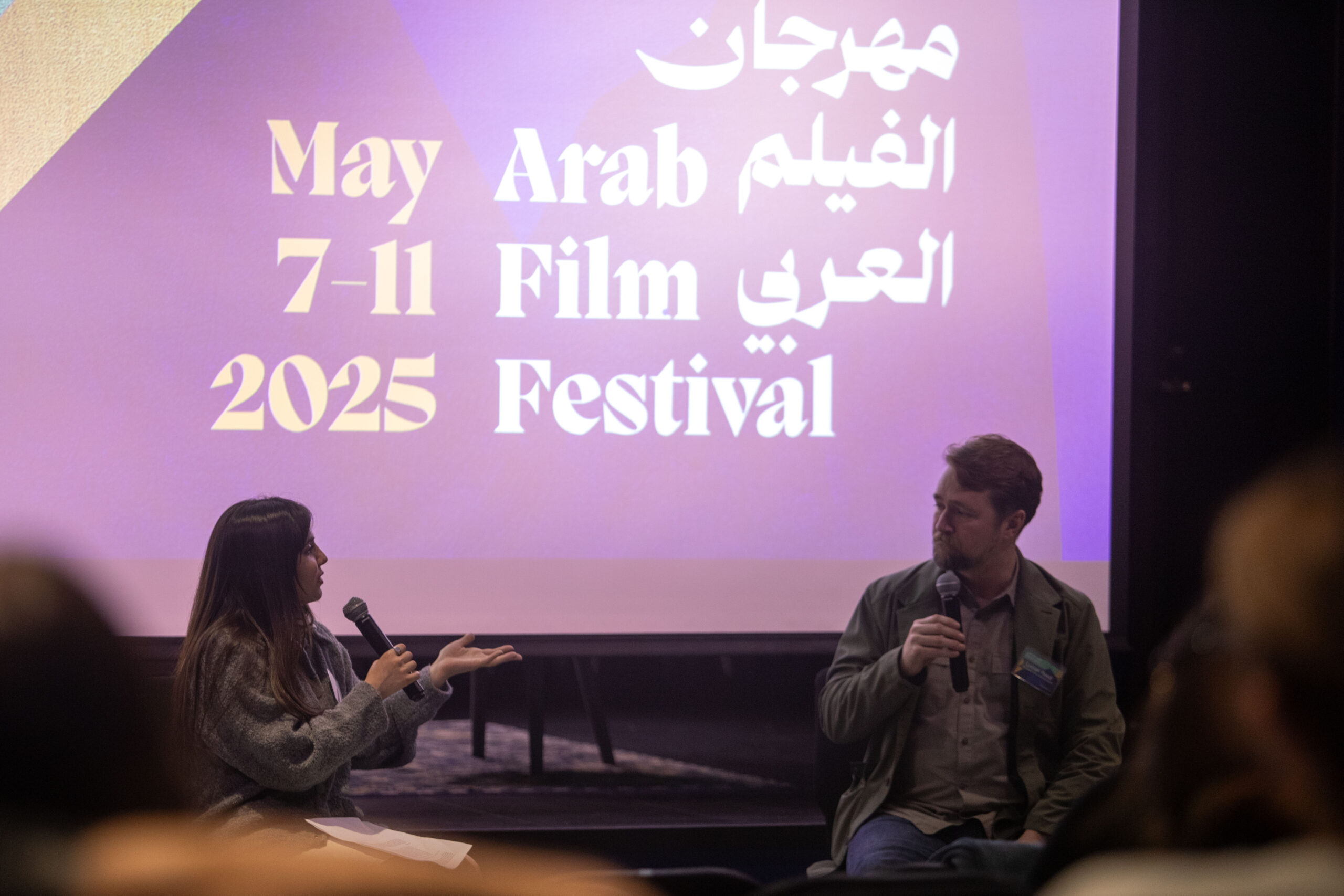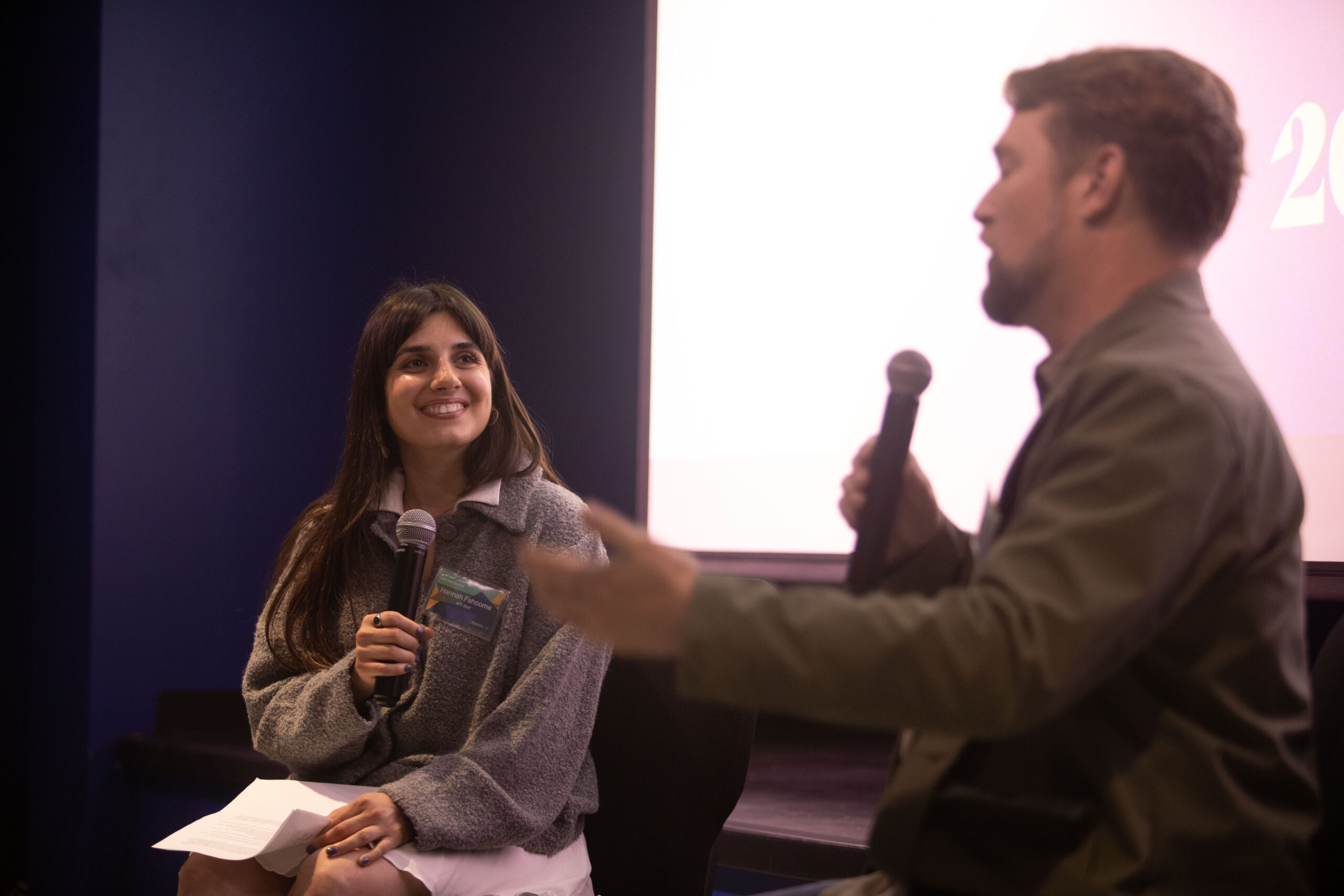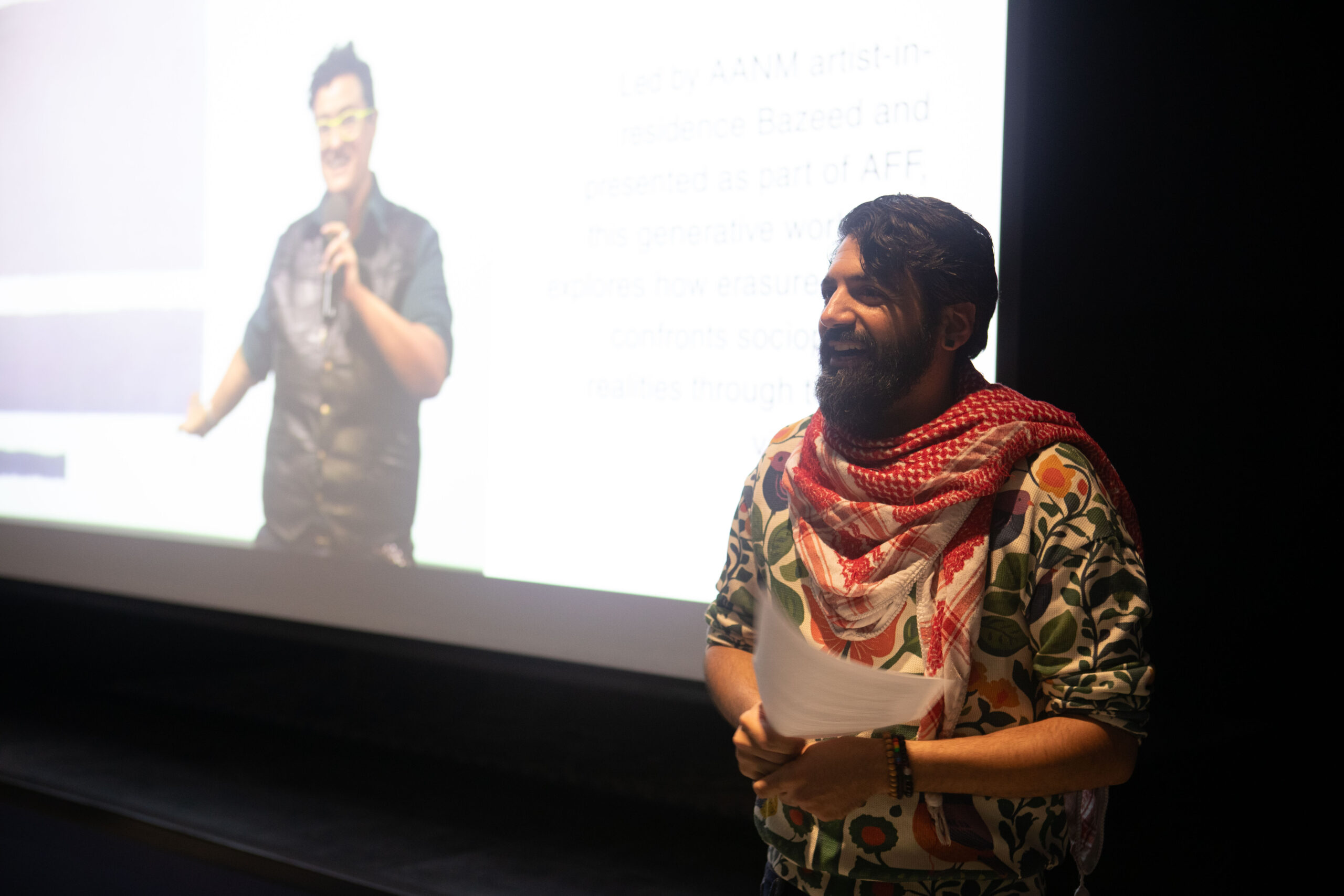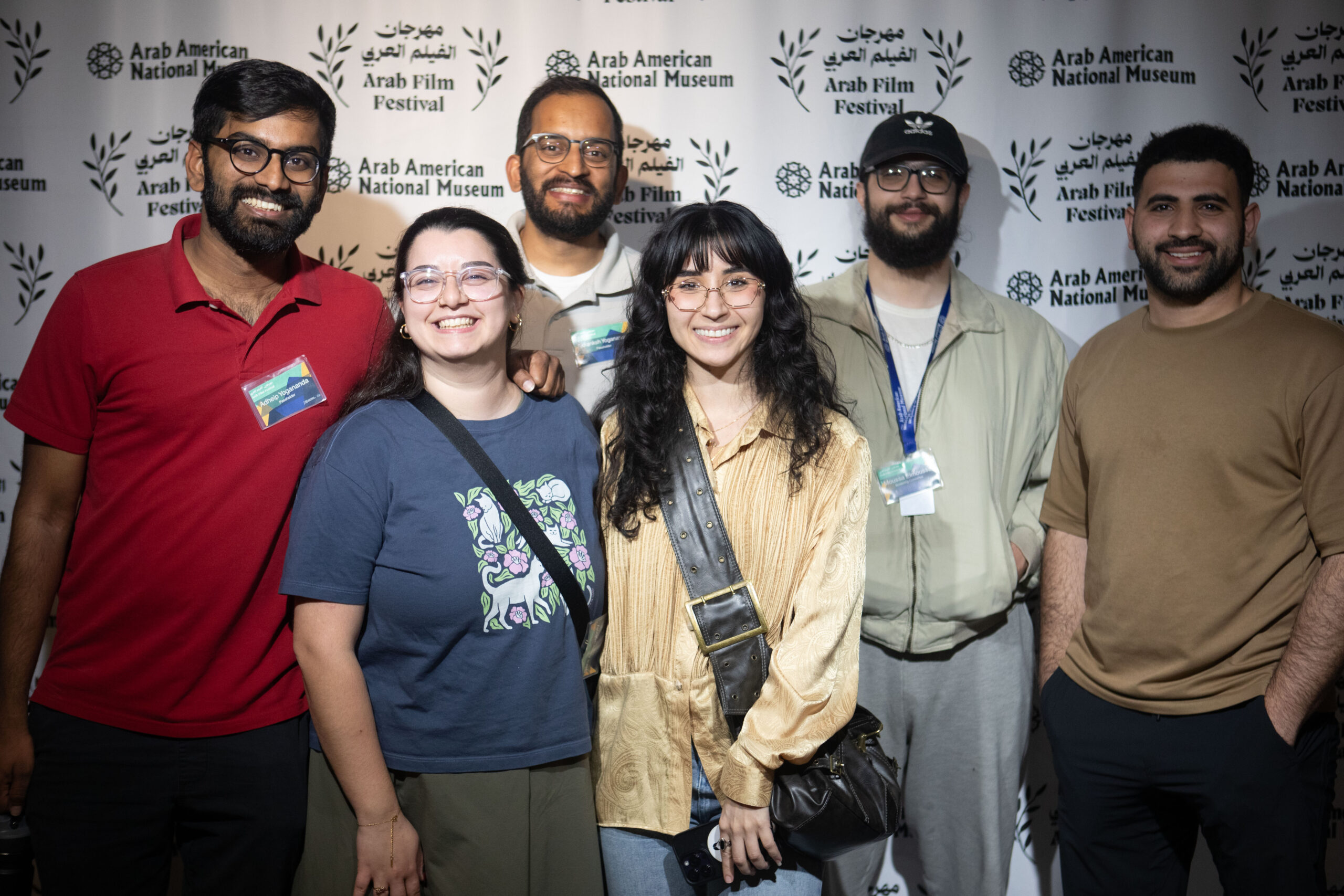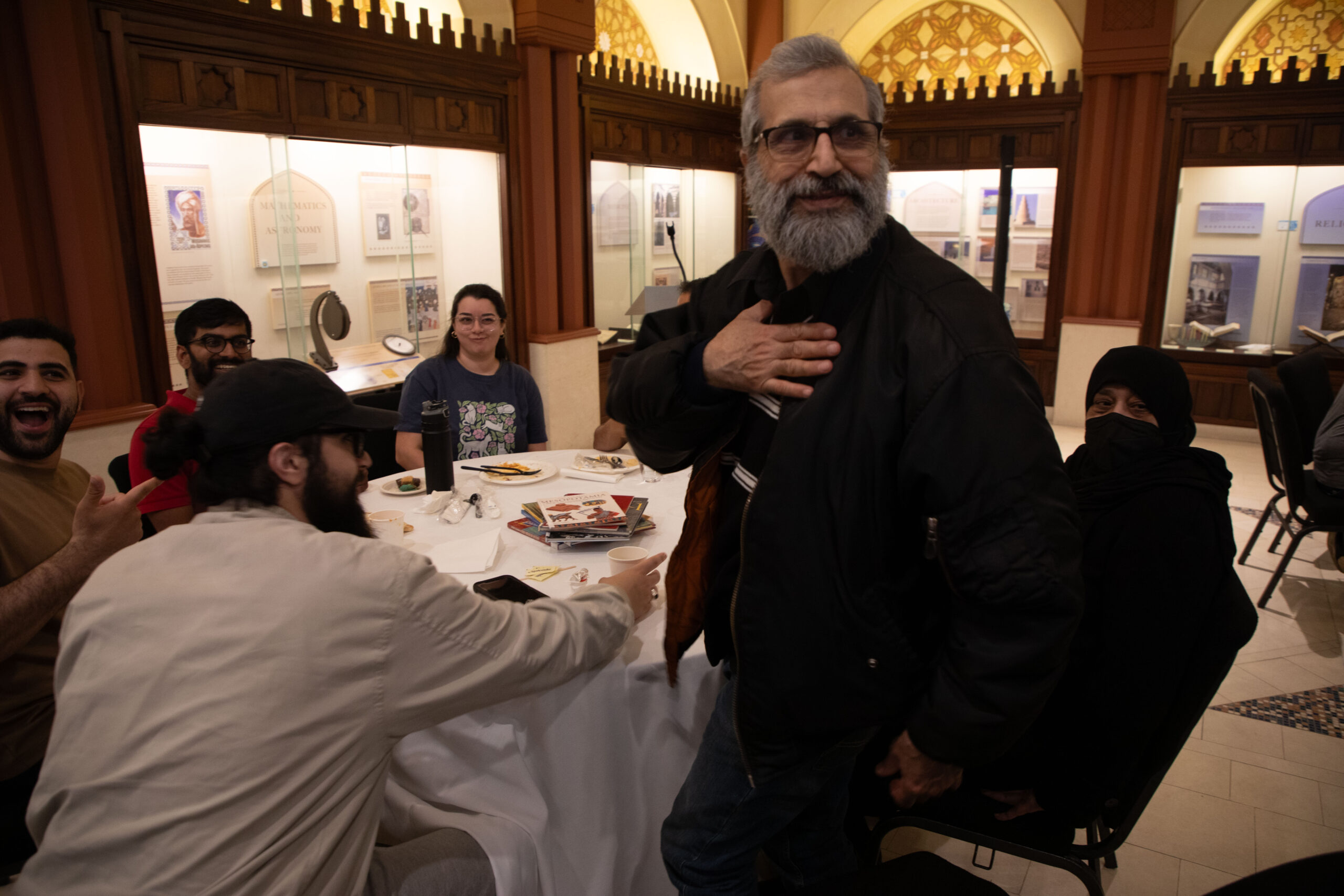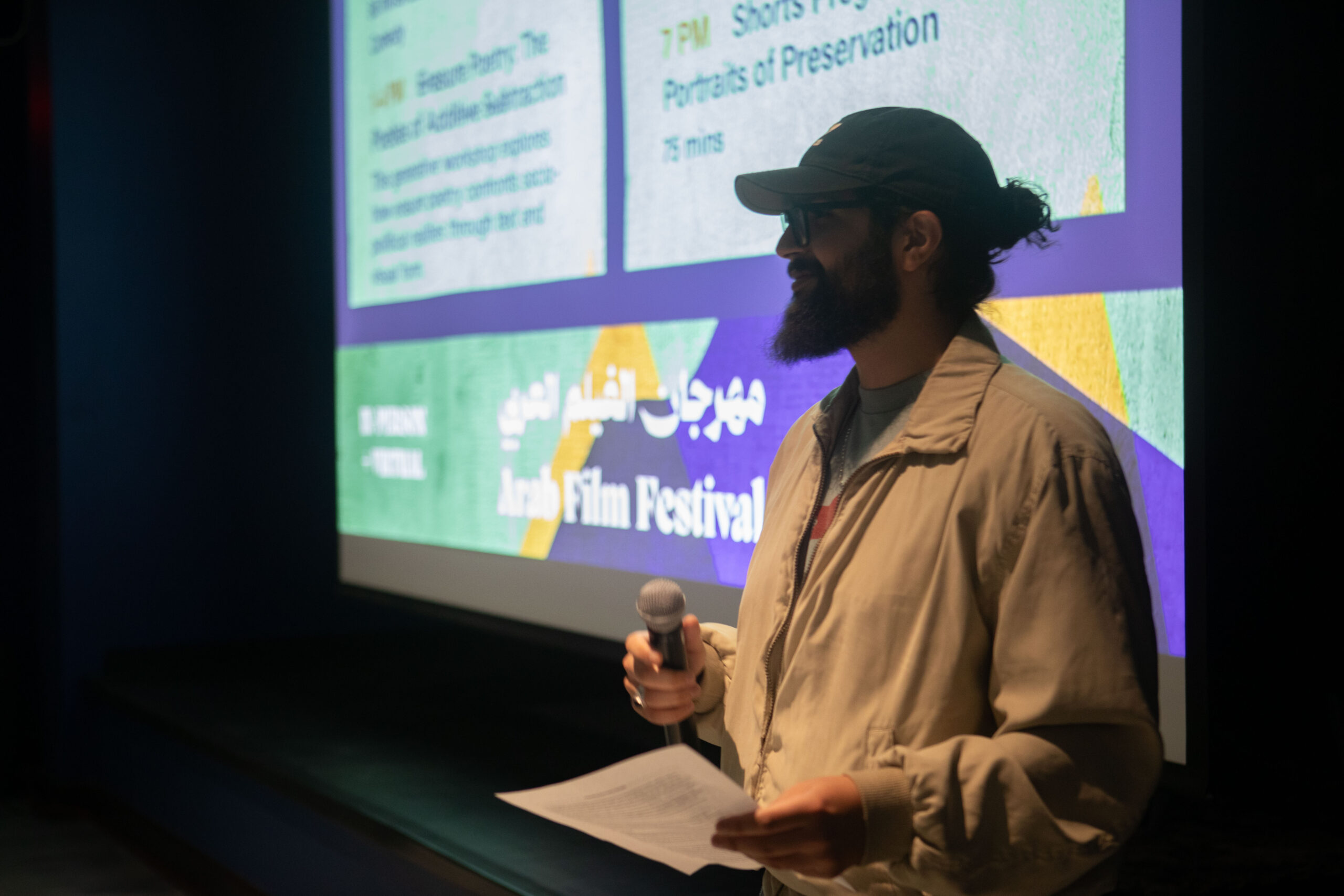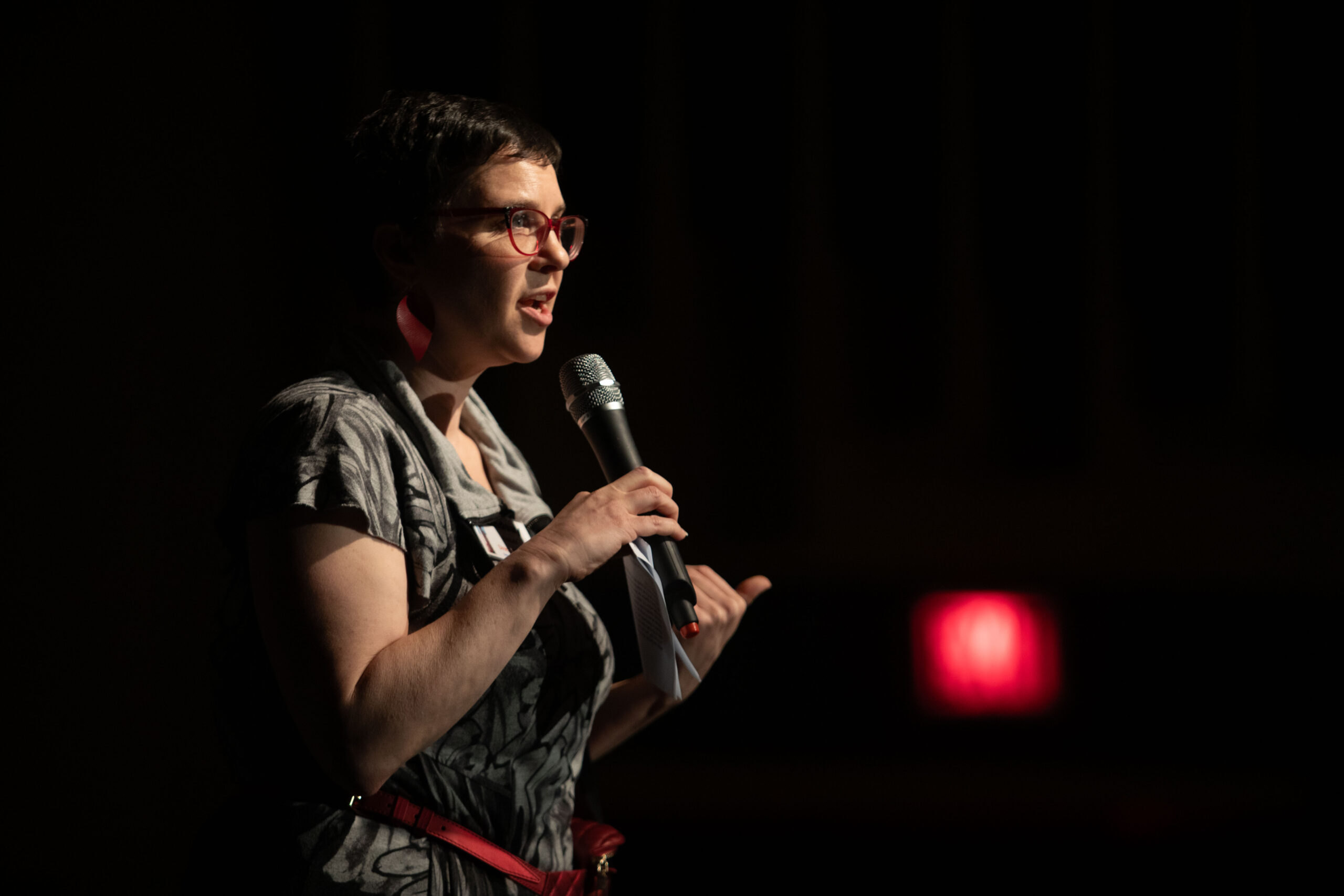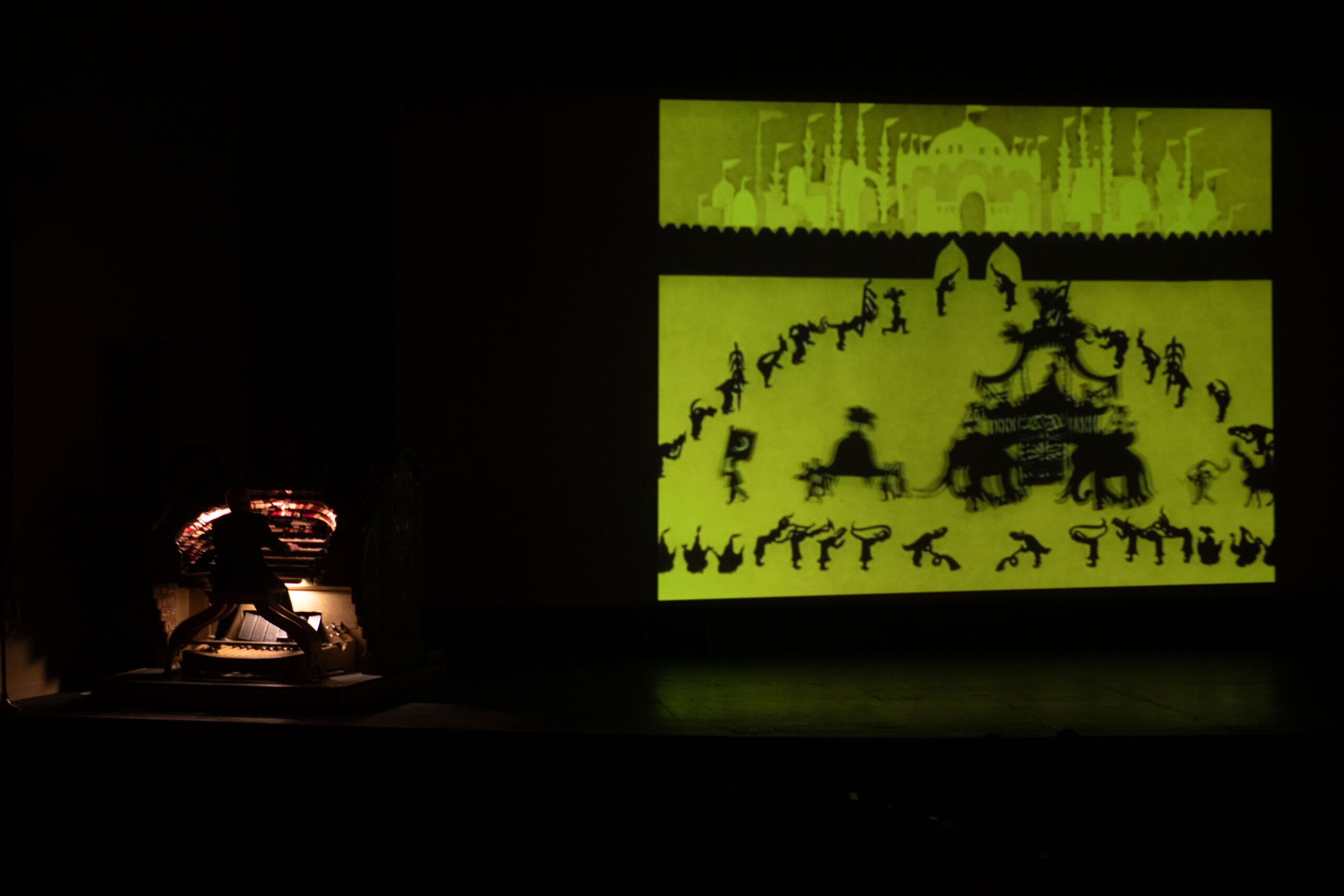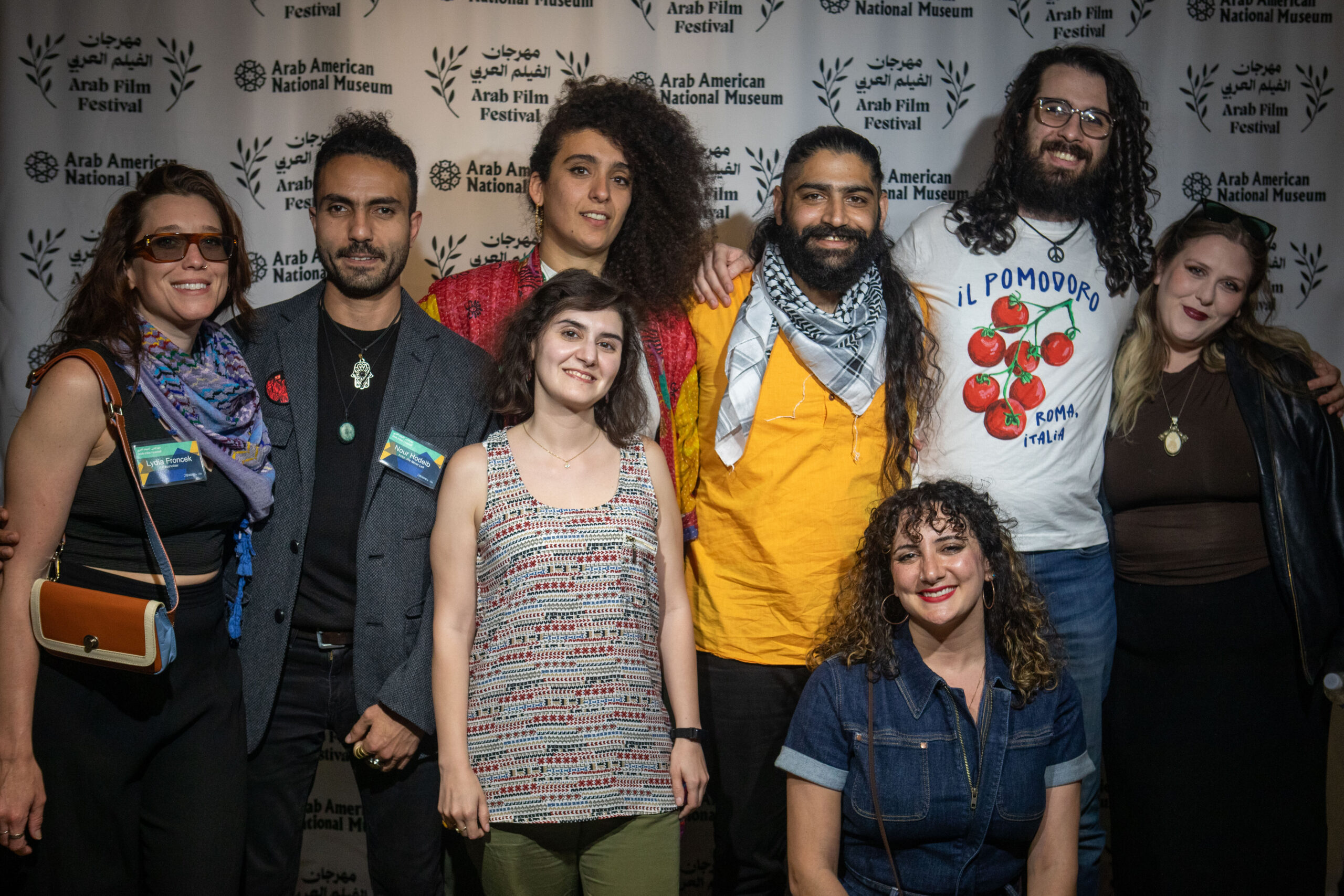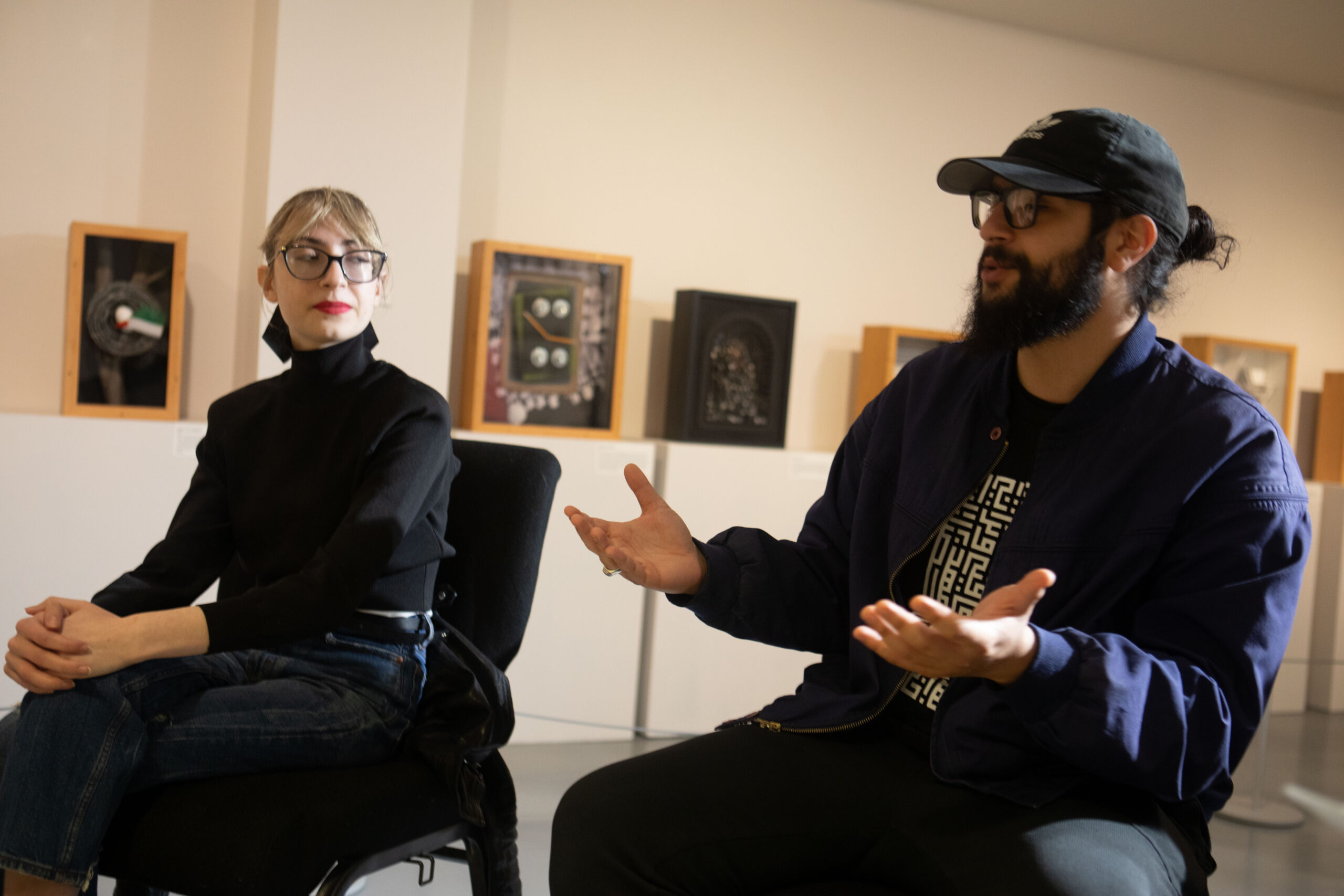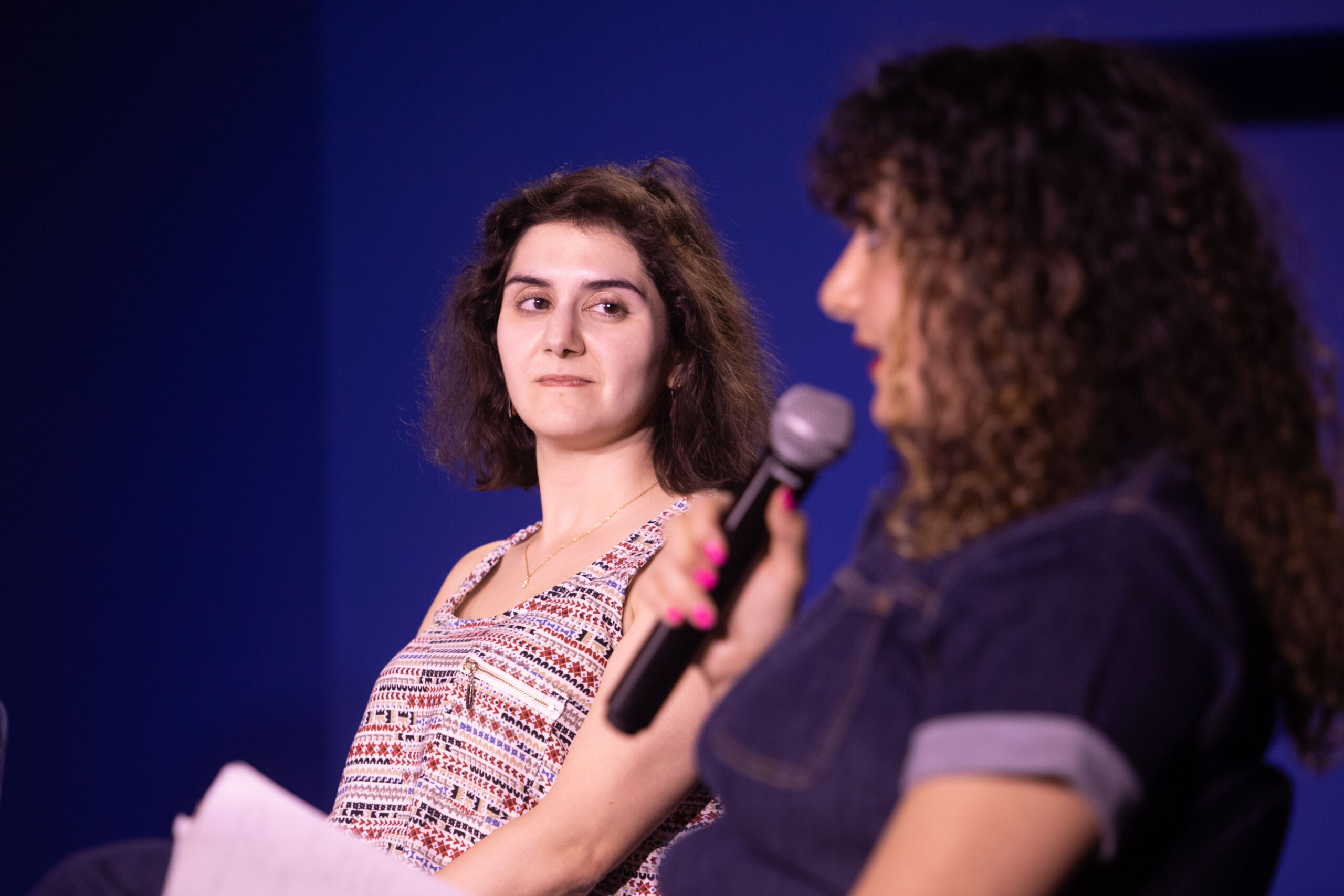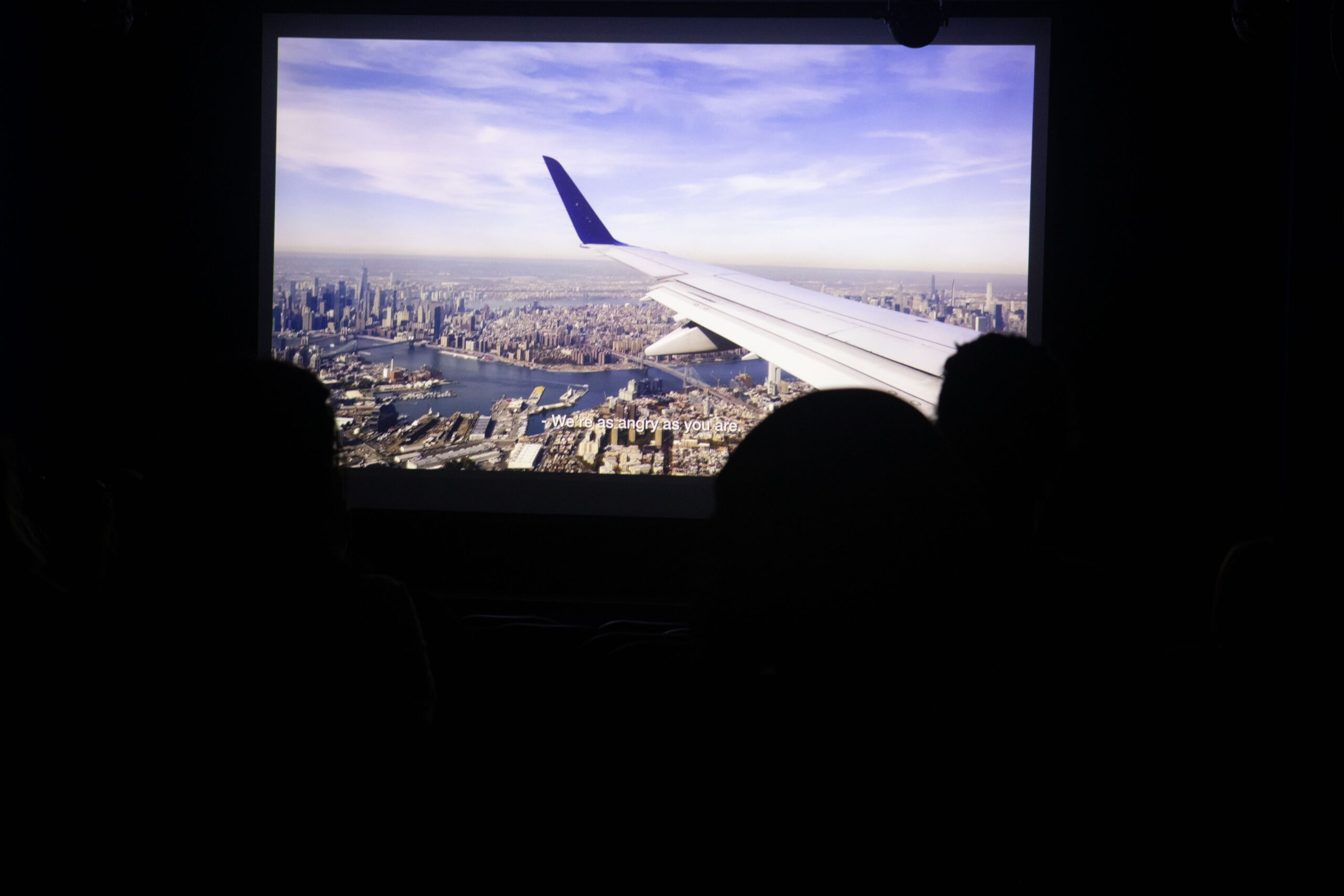
The Arab American National Museum, celebrating its 20th anniversary this year, made waves with its recent Arab Film Festival (AFF). The film festival is meant to inspire, educate, and gather community around art, culture, and important issues affecting Arab Americans and communities who support them.
“Films in our program and films about our Arab communities across the world are essential and necessary to share stories, dispel stereotypes, educate the public, and highlight realities,” said Dave Serio, Curator of Education and the Arab Film Festival. “Solidarity between communities is important to stopping violence, achieving liberation, and working together to uplift each other.”
The festival ran from Wednesday, May 7 through Sunday, May 11, featuring full-length films and shorts, covering topics like young romance, aging, war, occupation, expat life, and family dysfunction. It touched on multiple issues at home in the US as well across the world, including the genocide in Palestine, the humanitarian disaster in Sudan, and imperialism affecting Yemeni, Lebanese, and Syrian communities.
“While we often feel powerless, coming to programs like the Arab Film Festival, choosing to watch films and listen to Arab narratives is a small but excellent way to show support and ensure these narratives are heard,” Serio said.
While it was important for curators to capture the heavier realities of the Arab world, they also wanted to select films that depicted celebration and joy as well as the day-to-day mundanity of life.
“We don’t want this festival to be just war documentaries because there’s so much more to our communities. There’s so much more to us as people than being victims of conflict,” said Hannah Fahoome, filmmaker and co-committee chair of the festival.
Most of the films were screened in the auditorium at the Arab American National Museum. However, a few films were screened offsite at locations in Detroit, Hamtramck, and Flint, giving the festival a more expansive reach. Events featured food, late-night social hours, a poetry workshop, and interactive discussions to make members and guests feel at home.
“This place is your home, and we want you to feel that way. And the more you come and support us, the more energy and resources we have to share,” Fahoome said.
Opening night: Dinner and an Iraqi sports documentary at AANM
AANM kicked off opening night of the festival with dinner from local Iraqi restaurant, Arbeel Kabab. Many guests helped themselves to diamond-shaped loaves of samoon, soaking them in a hearty tomato-based bean stew or piling them with a heaping scoop of Iraqi Guss, or shawarma, a loved Iraqi dish featuring spiced lamb or veal. A favorite dish, believe it or not, was a flavorful chopped salad. Guests grabbed from treats like baklava for dessert.
Lions of Mesopotamia, directed by Lucian Read, follows Iraq’s national soccer (football) team as they work their way toward Asian Cup champions in 2007 during the height of Iraq’s civil war. It focuses on football legends like Nashat Akram and Hesham Mohamed. When Nashat’s father passes away from a stroke, Nashat quits football to work at his uncle’s butcher shop to support the family. Hesham similarly faces pushback on his dream, as his father, a clan leader, disapproves of his aspirations.
However, the soccer players rise to fame despite the call to be practical during hard times. The economic sanctions in the 90s continue to devastate Iraq’s economy, civil unrest climbs, and dictators assume control. What the young men realize is that the country needs to believe in something again, and football is a rallying force for the people.
Bombs drop all around the players who continue to practice. Baghdad falls and is divided into sects, forcing labels like Sunni, Shia, Arab, or Christian onto citizens and causing divisions between communities. During the American occupation, President Bush encourages the Iraqi team to press toward the Olympics, which disheartens some players who feel the US president takes credit for the country’s win.
The team’s spirits are in shambles by the time they make it to the Asian Cup. Everyone knows someone who was killed, and they begin to question what they’re striving for. Despite this, the team prevails against Saudi Arabia on the field. The victory is short-lived when players learn about the suicide bomber attack back home in Baghdad.
What this documentary does best is capture the fight for joy and personal and national wins amidst widespread human suffering and uncomfortable truths, which is a complicated balance to achieve. It also tells a story that would most likely not make it in major studios.
Lucian Read, whose photojournalism of the Iraq and Afghan wars has appeared in various publications, including his own collection of photography of his time with the US Marines, tells us that Lions of Mesopotamia allowed him to tell the Iraqi story in a different way that not a lot of Western audiences were familiar with. He, too, didn’t hear about the story until 2019.
“I wanted to tell a story where the Iraqis are the heroes,” said Read during a Q&A after the film.
It was essential for everyone involved in the film to establish trust with Read. A background in listening to Marine stories certainly came in handy.
“This story is like one of the most important things in their lives, right? For many people in the country. So they’re very protective of it…This story has never been told in this way, at this length, with this depth,” said Read. “So it was a long negotiation…There was a lot of sitting around and talking about what we were going to do…eventually they decided I was okay.’”
Not everyone was okay with Read, though. A few players like Younis Mahmoud declined to work with filmmakers. However, filmmakers got lucky with Ahmed Mnajed’s video camera footage, which really helped build the story. And through many negotiations, they were also able to get some footage from the government. Finally, YouTube became an important time capsule of information.
This artful piecing together of narratives and creative collaboration with the people who held these narratives close made for a unique documentary that tells a nostalgic tale that needed to be shared.
There were a few Iraqi American women in the audience who reacted openly to Read’s intimate portrayal and accuracy to language and cultural context.
“This was very moving and well-done…” said one audience member. “I’m so grateful for your work. It was unbiased. I haven’t seen Iraqis presented that way in film.”
Day 2: Academy Award-winning documentary defines creative resistance in Palestine
No Other Land, directed by Basel Adra, Rachel Szor, Yuval Abraham, and Hamdan Ballal, follows Basel Adra, a young Palestinian activist who documents his community’s mass expulsion and gradual destruction of his village, Masafer Yatta in the West Bank. Masafer Yatta becomes an Israeli military encampment that the Palestinian community no longer recognizes. Basel teams up with Israeli journalist Yuval Abraham to protest the actions of the Israeli military and generate global awareness around the villagers’ inhumane treatment.
Basel has been documenting his community since childhood. One of his earliest memories is of his father being arrested. We learn that his father is also an activist who instilled bravery and peaceful resistance into his son.
The story centers around the summer of 2019, when Israeli bulldozers knock down homes one by one in Masafer Yatta. While disheartened, the community retreats to caves and attempts to rebuild homes elsewhere. When troops confiscate farming tools, Basel’s Uncle Harun is shot. His uncle is paralyzed, and Basel’s grandmother attends to his declining state.
The film is bleak. It ends where we are now. Gaza is still occupied. People are still dying and starving. Important infrastructure is still being dismantled. There’s no way around this knowledge. Possibly the most comforting thing about it is the community’s resilience to rebuild over and over again and the relationship between Basel and Yuval. It was like listening in on two friends who respect each other’s individuality and encourage each other to dream about a freer future. The two refuse to be split on their values around truth and equality.
After the film, guests gathered in the Palestinian gallery outside the auditorium. “What does a free Palestine look like?” was written across a large sheet of paper set up on an easel. Guests were encouraged to write messages, thoughts, and feelings that came up after the film. “Schools,” “water,” “strong small businesses,” and “safe for family” were among some of the words people wrote. Someone wrote “Dearborn,” which was especially fitting, given the festival took place in Dearborn, one of the best examples of how Arab communities and allies can work together to create a home where everyone can thrive.
Day 3: A popular silent Arab film set to live organ music at Senate Theater
Speaking of cities that prove it’s possible to work together across communities and thrive, Detroit offered the perfect venue for AANM’s silent film screening—the Senate Theater.
The Senate Theater gives moviegoers a cinematic experience like no other. There aren’t many places where you can listen to a renowned organist play a dramatic, exhilarating arrangement on a Mighty Wurlitzer while watching a silent film made in 1926. The theater is on a mission to preserve theater pipe organ music, hosting countless events and movies to showcase the art in all its marvel and complexity.
Organist John Lauter is a native Detroiter who has been performing organ arrangements at renowned venues across the Midwest for over 20 years.
“If I do my job correctly, after about 40 seconds, you’ll forget about me, and that’s not an insult; that’s a good thing. I hope I can do a good job of backing up the emotion of what you’re seeing on the screen,” Lauter said.
One of the most intriguing aspects of The Adventures of Prince Achmed, directed by Lotte Reiniger, was its whimsical style and avante-garde animation. The pointy, ornate silhouettes of the characters gave each of them intrigue and mystery. While you could not see characters’ faces, you could read the emotion in their body language. For example, you knew Dinarsade didn’t return the sorcerer’s affection by the way she violently pulled her body away from him. You knew the prince was terrified when he couldn’t make the magical horse descend by his frantic hand movements. Every movement had intention.
The more transcendent, abstract parts of the film had their own unique treatment. The creators used ink-blotting transitions to show magic and other fantastical forces like when the sorcerer conjures up his horse or the Fire Mountain Witch summons her creaturely minions. One is reminded of psychology’s Rorschach test–think of a Rorschach test set to animation.
While the fantasy isn’t too different from ones we’ve seen in older Disney films, possibly one of the most problematic scenes was when Prince Achmed comes upon the ruler of Wak Wak island, Pari Banu, bathing in a pool with a few other women. He takes her discarded feather costume and makes her chase him for it. Then he captures her. They fall in love. It’s worth wondering how creators could reframe the female characters to have more autonomy in the film if they had the chance.
The film festival curators chose this film despite it being German and hitting on certain outdated representations of Arabs. There are still enough reasons to watch it, Matthew Jaber Stiffler, director of the Center for Arab Narratives, argues, pointing to its historical context.
“For people in Europe at the time, seeing a film like this would not have been out of place. The representations we see [in Prince Achmed] were very common. Think of popular films like The Sheik or Thief of Baghdad…” Stiffler said. “However, the thing about that time [in history] is there are some slightly problematic representations of Arab, Asian, and African cultures [in Prince Achmed], but it’s really not that bad for a 100-year-old film.”
In fact, The Adventures of Prince Achmed was one of the films Jack Shaheen, notable scholar of Arab narratives, rated favorably. In his documentary Reel Bad Arabs, he watched 1000 Hollywood films made between 1896 and 2000 with Arab and Muslim characters and analyzed them. He rated the majority of them negatively.
This representation in American film is part of the fabric of the Arab narrative, and it shows how far Arab communities have come in storytelling and where they can go.
“We want to make sure you know that our communities have been in the United States for 125-plus years, and they absorbed the same kinds of visual representations that were on film as everybody else did, and they were part of that,” Stiffler said.
Day 4: Young Lebanese expats demonstrate the art of revolution
We Never Left, directed by Loulwa Khoury, was one of the most intriguing viewings held during the Arab Film Festival. It follows a group of Lebanese expats and activists living in New York who find community with one another, educate the public on the Lebanese diaspora, and organize around helping family and friends fight corruption in Beirut.
The film touches on the complexity behind the dual life of living in New York while longing for an older Lebanon that has since become an oppressive place for many of its young people. Roughly 10 million Lebanese people live abroad and have experienced the exciting yet often alienating process of rediscovering oneself in a new place.
We learn that one of the most painful realities of being an expat is the people they leave behind and how to support people back home in restrictive or broken economies. Lebanon is still unresolved from its civil war, its people still unhealed from trauma. This is a heavy piece of identity for the people in Lebanon and those in the Lebanese diaspora.
The final tipping point for Lebanon, a country in crisis for decades, was the 2019 tax on online phone calls through apps like WhatsApp. This was one of the few affordable ways expats could keep in touch with family back home. This ultimately led to mass protests of sectarian rule, overinflation, and Lebanon’s refusal to provide basic services like water, sanitation, and electricity. Lebanese people at home and abroad revolted and organized globally.
One of the greatest wins of Lebanese expats, which is where the film ends, is getting to cast votes in parliamentary elections in Lebanon. The activists in the film acknowledge the victory but aspire to find more ways to keep challenging an oppressive system.
“Voting in elections was just another way of punching back at a system that has governed us with military boots. Sometimes, it’s very effective,” said Nour Mohamad Jamil Hodeib, film participant, writer, and Lebanese activist. Hodeib is a Doctoral Candidate in history at City University of New York (CUNY) writing a dissertation on leftist sonic countercultures of the Lebanese Civil War.
The activists in the film are a testament that while healing is possible and activism is an important outlet, it takes time, patience, and collective action to build a movement that unites and spans across nations. And it involves people who have ideas on revolution that differ or clash with others’.
“Many of us were dealing with this extremely differently... Some of us would have just wanted to do more negotiations. Some of us wanted a more liberal stance. Some of us would have taken a more anarchist stance,” said Elsa Saade, film participant, artist, and activist. “So there was a diverse group of people in New York and around the world that wanted to protest and to do something about what was happening back home. I think the elections were the most liberal democratic process that everyone could sign up for.”
The three main activists in the film–Saade, Hodeib, and environmentalist Rami Dinnawi–have been friends since they met in Beirut. The friendship they have is one of the most touching parts of Khoury’s inspiring documentary. They understand that friendship also means holding each other accountable.
“It becomes dangerous when we are not able to hold each other accountable personally and politically and when we start giving in blindly to Democratic centralism,” Hodeib said.
“We used our bond with each other to move in lockstep. It was foggy,” Dinnawi said. “But we knew with every step we were taking that we were moving in the same direction, even though sometimes at different paces.”
This group shows how powerful friendship is for spurring movements. Arguably, it’s one of the most important tools in organizing. Saade recalls how she was able to generate awareness among friends to organize in New York.
“Within this network of friends, someone told someone, told someone…The first night there were 100 of us. The second night—300. And then I think the biggest [protest] we had was of 1000,” she said. “Movement is a mix of systems and people. Systems change, people change…The core of a movement is friendship and relationships with one another and how we engage and invest in each other.”
Day 5: Virtual shorts program delivers micro yet impactful depictions of daily life
AANM film festival curators were sure to offer a digital experience to showcase the diversity in Arab filmmaking. There were more than a few films that captured immigrant life in the US and the nuance of living in an Arab household.
Standout films capturing the youth experience included Cigarettes, directed by Sarah Mokh, and Ketchup & Watermelon, directed by Nathan R. Smith.
In Ketchup & Watermelon, we follow high schoolers in love, Farah and Edison. Except, Farah must hide her love for Edison from her father, Ibrahim, who is looking after his two daughters in his wife’s absence. We feel the father’s real, visceral protection of his daughter’s innocence. At the same time, we can’t help but fight for the young couple’s genuine love for one another.
In Cigarettes, we follow Nora, who is anxiously awaiting college acceptance. Nora is a caretaker in her household—helping her single mother raise her younger sister. We learn her father is the middle-aged man bumming cigarettes outside the gas station. Nora buys her father a pack of cigarettes and drives him around town. Nora depicts the reality of many American households, particularly Arab American ones, where young women are actively caring for and sometimes even parenting their elders.
Other films that touch on challenging family dynamics and generational norms are Maqluba, directed by Mike Elsherif, and Mensch, directed by Luca Lellouche. The two films illustrate the reality of caring for aging loved ones while balancing jobs and passions and managing the joy and stress that comes with it. Elders in the films, on the other hand, find themselves reckoning with their histories and generational differences among their kin.
Moussa Elmoussa, a docent at AANM and member of the AFF screening committee, said the tendency for films to illustrate differences in generational, social, and economic backgrounds was intentional yet naturally fell into place during his selection.
”The Arab voice is anything but monolithic…There’s no harsher and heated argument than two Arabs who love each other,” he said. “We are deeply opinionated and convicted people who have a lot of heart and passion. I want to embrace that. I want to embrace the contention. Through the difficulties we become stronger together.”

